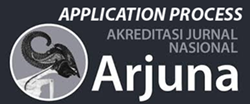Impact of Training & Development (T&D) on Employee’s Performance & Productivity (P&P)
DOI:
https://doi.org/10.59653/ijmars.v3i01.1476Keywords:
Training, Development, Employee Performance, Productivity, JACK NGOAbstract
This study explores the critical impact of Training and Development (T&D) on improving employees' Performance and Productivity (P&P), specifically within the context of JACK NGO in Parwan, Afghanistan. In a competitive global environment, corporate entities and non-governmental organizations must ensure their workforce possesses relevant and contemporary skills. Employing a quantitative research methodology, this study utilizes linear regression analysis to assess data gathered from a sample of 275 participants through a rigorously structured questionnaire. Additionally, secondary data sources were used to support the findings, which reveal a strong and statistically significant positive relationship between T&D initiatives and enhancements in employee performance and productivity (P&P) at JACK NGO. Notably, on-the-job training is a particularly effective facet of T&D, directly contributing to enhanced employee outcomes. This research underscores the necessity of strategically optimizing T&D programs as a fundamental strategy for bolstering employee effectiveness and driving organizational success at JACK NGO. The results suggest the need for strategic investments in extensive training programs, which improve employee skills and support the organization’s broader goals and vision, ultimately fostering sustainable growth and a positive impact within the community it serves.
Downloads
References
Ahmad, K. Z., & Bakar, R. A. (2003). The association between training and organizational commitment among white-collar workers in Malaysia. International Journal of Training and Development, 7(3). https://doi.org/10.1111/1468-2419.00179
Alagaraja, M., & Li, J. (2015). Utilizing institutional perspectives to investigate the emergence, rise, and (relative) decline of corporate universities. Human Resource Development International, 18(1). https://doi.org/10.1080/13678868.2014.979003
Armstrong, M., & Taylor, S. (2023). Armstrong's handbook of human resource management practice: A guide to the theory and practice of people management. Kogan Page Publishers.
Chishti, U. G., Zaheer, S. S., & Zehra, K. (2023). IMPACT OF HUMAN RESOURCE MANAGEMENT (HRM) PRACTICES ON ACADEMIC STAFF RETENTION. Priority-The International Business Review, 2(1), 121-137.
Garavan, T., McCarthy, A., Lai, Y., Murphy, K., Sheehan, M., & Carbery, R. (2021). Training and organisational performance: A meta-analysis of temporal, institutional and organisational context moderators. Human Resource Management Journal, 31(1), 93–119. https://doi.org/10.1111/1748-8583.12284
Gibb, A. (2011). Concepts into practice: Meeting the challenge of development of entrepreneurship educators around an innovative paradigm: The case of the International Entrepreneurship Educators’ Programme (IEEP). International Journal of Entrepreneurial Behaviour and Research, 17(2), 146–165. https://doi.org/10.1108/13552551111114914
Hassan, Z. (2022). Employee retention through effective human resource management practices in Maldives: Mediation effects of compensation and rewards system. Journal of Entrepreneurship, Management and Innovation, 18(2). https://doi.org/10.7341/20221825
Herzberg, F., Mausner, B., & Snyderman, B. B. (2017). The motivation to work revisited: An empirical study. Journal of Organizational Behavior, 38(5), 752-769. https://onlinelibrary.wiley.com/doi/full/10.1002/job.2225
Kaufman, H. G., & Kahn, J. R. (2019). Structured T&D programs and employee adaptability. Journal of Human Resource Development, 32(2), 210-234. https://onlinelibrary.wiley.com/doi/full/10.1002/hrdq.21303
Khawaja Jehanzeb, D. N. (2012). Training and Develop-ment Program and Its Benefits to Employees and Organizations. Far East Journal of Psychology and Business, 59, 71.
Kuknor, S., & Kumar, V. V. R. (2024). Impact of training and development interventions for diversity & inclusion: proposing an organizational schema. Development and Learning in Organizations, 38(1). https://doi.org/10.1108/DLO-11-2022-0233
Noe, R. A., Tews, M. J., & Michel, J. W. (2017). Managers’ informal learning: a trait activation theory perspective. International Journal of Training and Development, 21(1). https://doi.org/10.1111/ijtd.12092
Nneka, S. E., & Oladele, R. (2013). Implications of training and development programmes on accountants productivity in selected business organizations in Onitsha, Anambra state, Nigeria. International Journal of Asian Social Science, 3(1), 266–281. Retrieved from http://www.aessweb.com/journal-detail.php?id=5007
Salas, E., Tannenbaum, S. I., Kraiger, K., & Smith-Jentsch, K. A. (2012). The Science of Training and Development in Organizations: What Matters in Practice. Psychological Science in the Public Interest, Supplement, 13(2), 74–101. https://doi.org/10.1177/1529100612436661
Smith, J., & Johnson, T. (2016). On-the-job training and its impact on workforce development. Journal of Applied Business Studies, 29(4), 315-328.
Sundstrom, E. D., Lounsbury, J. W., Gibson, L. W., & Huang, J. L. (2016). Personality Traits and Career Satisfaction in Training and Development Occupations: Toward a Distinctive T&D Personality Profile. Human Resource Development Quarterly, 27(1). https://doi.org/10.1002/hrdq.21223
Zehra, K. (2024). Digital transformation in training: The future of human capital development. Journal of Business and Innovation, 12(1), 95-112.
Downloads
Published
How to Cite
Issue
Section
Categories
License
Copyright (c) 2025 Mohammad Yusuf Saleh, Hamdullah Azimi

This work is licensed under a Creative Commons Attribution-ShareAlike 4.0 International License.
Authors who publish with this journal agree to the following terms:
- Authors retain copyright and grant the journal right of first publication with the work simultaneously licensed under a Creative Commons Attribution-ShareAlike that allows others to share the work with an acknowledgement of the work's authorship and initial publication in this journal.
- Authors are able to enter into separate, additional contractual arrangements for the non-exclusive distribution of the journal's published version of the work (e.g., post it to an institutional repository or publish it in a book), with an acknowledgement of its initial publication in this journal.
- Authors are permitted and encouraged to post their work online (e.g., in institutional repositories or on their website) prior to and during the submission process, as it can lead to productive exchanges, as well as earlier and greater citation of published work (See The Effect of Open Access).
























